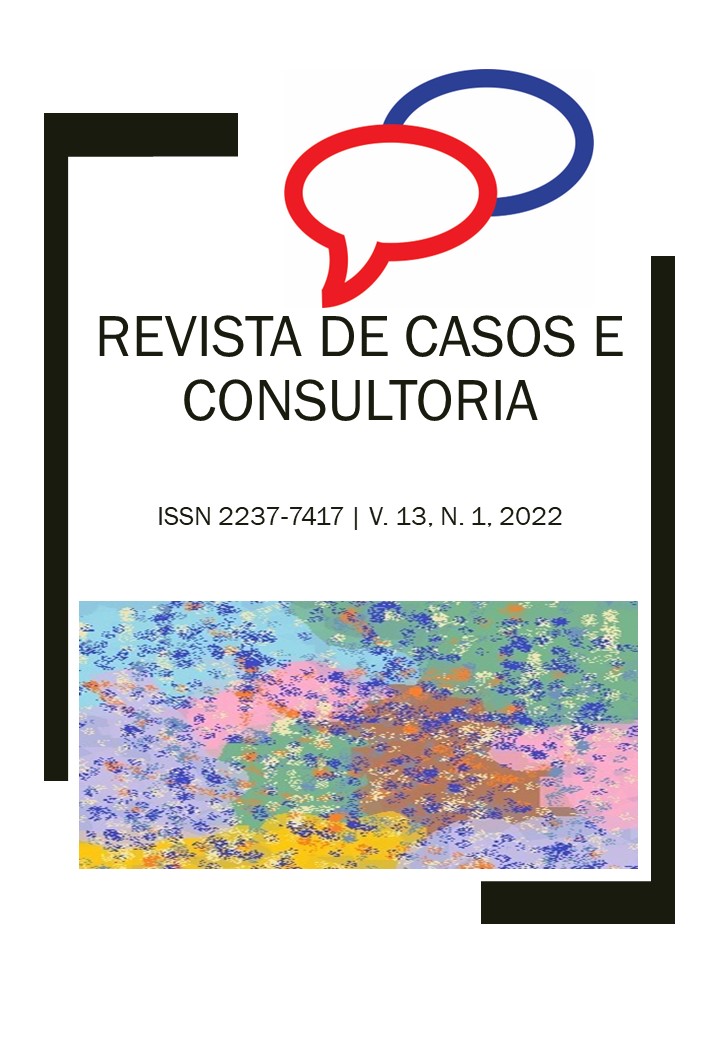Techniques for Assessing the Toxicity and Effects of Consumption of Cascara-Sagrada (Rhamnus Purshiana): an Integrative Review
Keywords:
Cascara Sagrada. Toxicity. Effects. Rhamnus Purshiana.Abstract
Introduction: An alternative for the treatment of a wide variety of diseases are medicinal plants and herbal medicines. Objective: to analyze, in the national and international literature, the techniques for evaluating the toxicity and the effects of the consumption of Cascara-sacred (Rhamnus Purshiana). Methodology: this was a review research carried out in LILACS databases; SciELO; PUBMED; web of science and SCOPUS, between January 2015 and August 2021. Six articles were selected to compose the study. Results: The techniques to assess the toxicity of high-performance cascara sagrada are through spirometry and chromatography machines, as they are able to isolate their marker compounds from materials. To avoid toxicity, studies recommend its use for a period of less than four weeks. Thus, for the safe and intoxication-free consumption of Cáscara sagrada. it is important to carry out evaluations of the relationships between anthraquinone compounds, since they are responsible for the toxic effects found in extracts. In this follow-up, one of the studies evaluated stated that using glycosylated forms, such as cascarosides, is worthwhile, since they avoid direct contact of cells with active forms during intestinal transport. In addition, absorption is avoided leading to the need for fewer doses. Conclusion: Therefore, the enrichment of cascarosides in cascara extract and its use for a period of less than four weeks is recommended to avoid possible liver poisoning.
Downloads
References
BELEZA, J. A. M. Plantas medicinais e fitoterápicos na atenção primária à saúde: contribuição para profissionais prescritores. Rio de Janeiro, 2016. Monografia (Especialização) – Instituto de Tecnologia em Fármacos – Farmanguinhos, Pós-graduação em Gestão da Inovação de Medicamentos da Biodiversidade na modalidade EAD, 2016.
BRASIL. Agência Nacional de Vigilância Sanitária. Tradução de European Union herbal monograph on Rhamnus purshiana DC. Cortex EMA/HMPC/726270/2016
BRASIL. Agência Nacional de Vigilância Sanitária. Formulário de Fitoterápicos da Farmacopéia Brasileira. 1ª Edição. Primeiro Suplemento. Brasília, 2018.
BRASIL. Agência Nacional de Vigilância Sanitária. Memento Fitoterápico da Farmacopéia Brasileira. 1ª Edição. Brasília, 2020.
CARNEIRO, A. L. C.; COMARELLA, L. Principais interações entre plantas medicinais e medicamentos. Revista Saúde e Desenvolvimento, v. 9, n. 5, p. 4-19, mai. 2016.
COSTA, N. C. et al. Fitoterápicos na atenção primária à saúde: desafios e perspectivas na atuação médica no SUS. Revista Fitos, 2019.
DIAS, E. C. M. et al. Uso de fitoterápicos e potenciais riscos de interações medicamentosas: reflexões para prática segura. Revista Baiana de Saúde Pública, v. 41, n. 2, p. 33-45, mai. 2018.
DEMARQUE, D. P. et al. New cascarosides from Rhamnus purshiana and fragmentation studies of the class by ion trap mass spectrometry. Rapid Commun Mass Spectrom. v. 31, n. 14, p. 1169-174, jul. 2017.
FLORES, E. et al. Cascara Sagrada: A Dangerous Herbal Stool Softener: A Case Report and Literature Review. The American College of Gastroenterology, v. 0, supl. 1, p. 1163-264.
GIBERTONI, E. C. C. L.; TOMA, W.; GUIMARÃES, L. L. Cáscara Sagrada (Rhamnus purshiana DC): influência da forma de preparo do chá na extração do princípio ativo. Unisanta Health Science. v. 4, n. 1, p. 21-9, mai. 2020.
MAIA, A. C. P. et al. A fitoterapia sob a ótica dos profissionais de saúde no Brasil nos últimos 10 anos. Gaia Scientia, v. 10, n. 4, p. 658-670, 2016.
NAKASONE, E. S.; TOKESHI, J. A Serendipitous Find: A Case of Cholangiocarcinoma Identified Incidentally After Acute Liver Injury Due to Cascara sagrada Ingestion. I Journal Of Medicine & Public Health. v. 15, n. 6, p. 1-8, nov. 2015.
RHO, T. et al. Isolation of six anthraquinone diglucosides from cascara sagrada bark by high-performance countercurrent chromatography. J Sep Sci. v. 43, n. 21, p. 4036-046, mai. 2020.
RIBEIRO, L. H. L. Análise dos programas de plantas medicinais e fitoterápicos no Sistema Único de Saúde (SUS) sob a perspectiva territorial. Ciência & Saúde Coletivo, São Paulo, v. 24, p. 1733- 742, set. 2019.
SANTOS, J. S. Estudo da espécie rhamnus purshiana DC conhecida cáscara sagrada. Trabalho apresentado à Universidade de Uberaba como parte dos requisitos para conclusão do curso de graduação em Farmácia. 2019.
SILVA, N. C. S. et al. A utilização de plantas medicinais e fitoterápicos em prol da saúde. ÚNICA Cadernos Acadêmicos. São Paulo, v. 3, n. 1, 2017.
SIMÕES et al. Farmacognosia: do produto natural ao medicamento. Ed. Artmed. 2017.
SOARES, C. B. et al. Revisão integrativa: conceitos e métodos utilizados na enfermagem. Escola de Enfermagem USP, v. 48, n. 2, p. 335-45, 2014.
SOUZA, L. Q. R. et al. Análise dos medicamentos fitoterápicos comercializados em farmácia magistral do sertão paraibano. Research, Society and Development. v. 9, n. 7, p. 1- 12, mai. 2020.
Downloads
Published
How to Cite
Issue
Section
License
Copyright (c) 2022 Manuela Luiza de Souza Fernandes, Bruno Leonardo Almeida Viana, Érica Natasha Duarte Silva, Fernando Antonio Madeira Marinho, Mayara Ladeira Coêlho

This work is licensed under a Creative Commons Attribution 4.0 International License.

 Português (Brasil)
Português (Brasil) English
English Español (España)
Español (España)